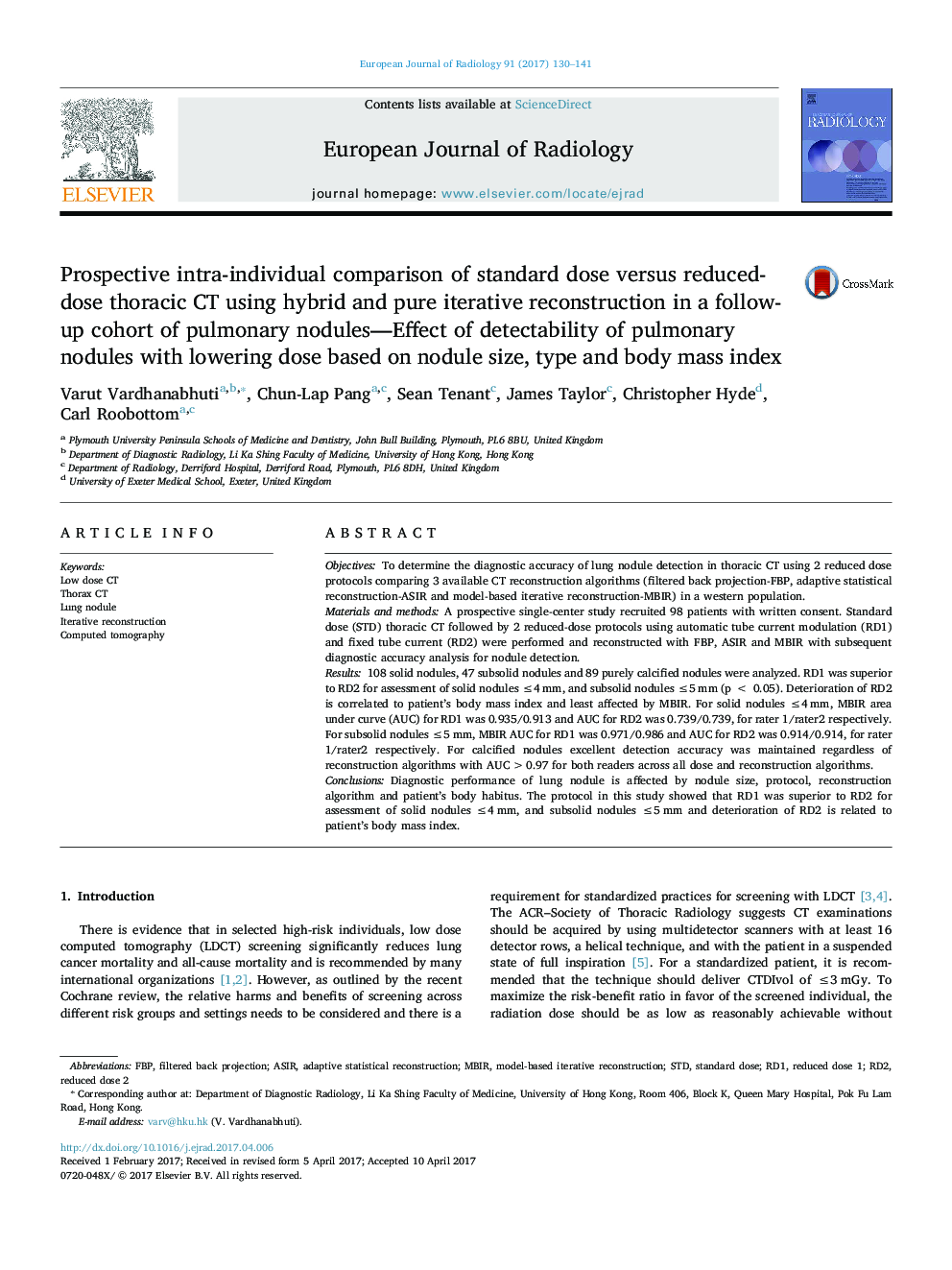| کد مقاله | کد نشریه | سال انتشار | مقاله انگلیسی | نسخه تمام متن |
|---|---|---|---|---|
| 5726294 | 1609729 | 2017 | 12 صفحه PDF | دانلود رایگان |

- Dose reduction should be tailored to patient's size, indication and reconstruction algorithms.
- Low-dose thoracic CT with fixed tube current (CTDIvol 0.3Â mGy) impacts accuracy in large patients.
- Being aware of limitations of low-dose approaches will ensure quality and accuracy.
- Protocols must be based on individual patients and clinical indication.
ObjectivesTo determine the diagnostic accuracy of lung nodule detection in thoracic CT using 2 reduced dose protocols comparing 3 available CT reconstruction algorithms (filtered back projection-FBP, adaptive statistical reconstruction-ASIR and model-based iterative reconstruction-MBIR) in a western population.Materials and methodsA prospective single-center study recruited 98 patients with written consent. Standard dose (STD) thoracic CT followed by 2 reduced-dose protocols using automatic tube current modulation (RD1) and fixed tube current (RD2) were performed and reconstructed with FBP, ASIR and MBIR with subsequent diagnostic accuracy analysis for nodule detection.Results108 solid nodules, 47 subsolid nodules and 89 purely calcified nodules were analyzed. RD1 was superior to RD2 for assessment of solid nodules â¤4 mm, and subsolid nodules â¤5 mm (p < 0.05). Deterioration of RD2 is correlated to patient's body mass index and least affected by MBIR. For solid nodules â¤4 mm, MBIR area under curve (AUC) for RD1 was 0.935/0.913 and AUC for RD2 was 0.739/0.739, for rater 1/rater2 respectively. For subsolid nodules â¤5 mm, MBIR AUC for RD1 was 0.971/0.986 and AUC for RD2 was 0.914/0.914, for rater 1/rater2 respectively. For calcified nodules excellent detection accuracy was maintained regardless of reconstruction algorithms with AUC >0.97 for both readers across all dose and reconstruction algorithms.ConclusionsDiagnostic performance of lung nodule is affected by nodule size, protocol, reconstruction algorithm and patient's body habitus. The protocol in this study showed that RD1 was superior to RD2 for assessment of solid nodules â¤4 mm, and subsolid nodules â¤5 mm and deterioration of RD2 is related to patient's body mass index.
Journal: European Journal of Radiology - Volume 91, June 2017, Pages 130-141